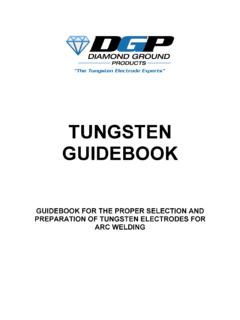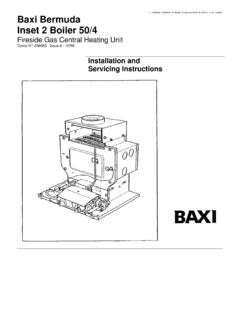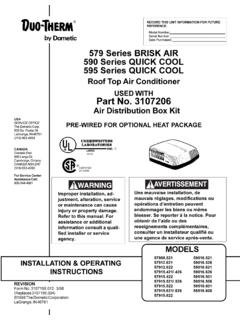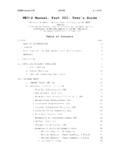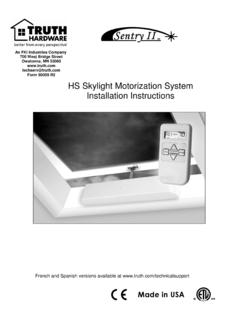Transcription of EMA-FDA pilot program for parallel assessment of …
1 20 August 2013 EMA/430501/2013 Human Medicines Development and Evaluation EMA-FDA pilot program for parallel assessment of quality -by- design applications: lessons learnt and Q&A resulting from the first parallel assessment In March 2011, the EMA and FDA launched a pilot program that aims at a parallel assessment by both agencies of certain quality /CMC sections which are relevant to quality by design (QbD), such as development, design space and real time release testing. The objective of the pilot is to ensure consistent implementation between EU and US of ICH Q8, 9, 10, 11 guidelines in the assessment process and to facilitate sharing of regulatory decisions on new regulatory concepts. This voluntary pilot program is open to new Marketing Authorisation Applications (MAAs)/New Drug Applications (NDAs), Type II Variations/Prior-approval supplements (sNDA) and Scientific Advice requests/CMC formal meeting requests that include QbD/Process Analytic Technology (PAT) elements and are submitted to either both agencies at the same time resulting in a parallel evaluation, or either to EMA or FDA in which case the agency doing the evaluation obtains consultative advice from the other agency.
2 More information on the EMA-FDA pilot program for parallel assessment of QbD applications can be found in this link. The first EMA-FDA parallel assessment of QbD elements of an initial marketing authorisation application has been successfully finalised as well as some consultative advice procedures. Both agencies experienced the pilot program as extremely useful to share knowledge, facilitate a consistent implementation of the ICH guidelines and to harmonise regulatory decisions to the greatest extent possible. Also, procedural process improvements have been made to facilitate future parallel assessments. As a result of this pilot program , the EMA and FDA reached agreements on a wide range of QbD aspects as reflected in the Q&A below. In the future, more lessons learnt resulting from this EMA-FDA pilot program will be published. Topics to be included in Q&As that are currently in preparation include design Space verification, design Space and risk assessment level of detail in submissions, continuous process verification and continuous manufacturing.
3 See websites for contact details European Medicines Agency Food and Drug Administration European Medicines Agency and Food and Drug Administration, 2013. Reproduction is authorised provided the source is acknowledged. 1. Question: What are the Agencies expectations in a regulatory submission for quality Target Product Profile (QTPP)? Answer: The Agencies expectation is that applicants will provide the QTPP, which describes prospectively the quality characteristics of a drug product that should be achieved to ensure the desired quality , taking into account safety and efficacy of the drug product. The QTPP is specified only for the finished product. Although there is no special format to provide the QTPP information, it would be useful to present in a tabular format in the application. 2. Question: What are the Agencies expectations in a regulatory submission for Critical quality Attributes (CQAs)? Answer: The Agencies expectation is that applicants will provide a list of CQAs for drug substance, finished product, and excipients when relevant.
4 This list should also include the acceptance limits for each CQA, and a rationale for designating these properties as a CQA. Furthermore, there should be a discussion of how the drug substance and excipient CQAs relate to the finished product CQAs based on prior knowledge, risk assessment or experimental data. The basis of the control strategy should be to ensure that the drug substance and finished product CQAs are consistently within the specified limits. Although there is no special format to provide information on CQAs, it would be useful to present in a tabular format in the application. 3. Question: Would the Agencies accept a three-tier classification of criticality for process parameters? Answer: In accordance with ICH Q8(R2) a critical process parameter is one whose variability has an impact on a critical quality attribute and therefore should be monitored or controlled to ensure the process produces the desired quality .
5 In a submission that was evaluated by both EMA and FDA, the Applicant proposed an approach to risk assessment and determination of criticality that includes a three-tier classification for quality attributes and process parameters: critical, key and non-critical. In this approach, a critical factor was defined as a factor that led to failure during experimentation. A factor that had not led to failure within the range studied, but still may have an impact on product quality , was considered as a key factor. The Agencies do not support the use of the term Key Process Parameters (KPP) since it is not an ICH terminology. Furthermore, experience reveals that different applicants use the term key differently, leading to more difficult internal communication. The fact that a risk of failure is mitigated by applying a robust proactive control strategy should not allow for the underestimation of assigning criticality. The Agencies are amenable to the applicant using this terminology in the pharmaceutical development section to communicate development findings.
6 However, in the Description of the Manufacturing Process and Process Controls and Control of Critical Steps and Intermediates sections, the description of all parameters that have an impact on a CQA should be classified as critical. 4. Question: What are the Agencies expectations in a regulatory submission for manufacturing process descriptions? EMA-FDA pilot program for parallel assessment of quality -by- design applications: lessons learnt and Q&A resulting from the first parallel assessment EMA/430501/2013 Page 2/3 Answer: The same requirements apply to the level of detail in the manufacturing process description irrespective of the development approach. For US FDA, a comparably detailed process description can be submitted in lieu of a Master Production Record for drug product manufacturing for 505(b)(1) products. However, proposed or actual commercial scale Master Production Records are required for generic and 505(b)(2) products.
7 In EU, there is requirement for a full description of the manufacturing process in all cases. It is important that the process descriptions be comprehensive and describe process steps in a sequential manner including batch size(s) and equipment type. The critical steps and points at which process controls, intermediate tests or final product controls are conducted should be identified. Steps in the process should have the necessary detail in terms of appropriate process parameters along with their target values or ranges. The process parameters that are included in the manufacturing process description should not be restricted to the critical ones; all parameters that have been demonstrated during development as needing to be controlled or monitored during the process to ensure that the product is of the intended quality need to be described. Application of the concepts defined in ICH Q8(R2) in the area of analytical methods.
8 General comment Recently, industry has been applying QbD concepts in the area of analytical methods using risk assessments and statistically designed experiments to define Analytical Target Profiles (ATP) and Method Operational design Ranges (MODR) for analytical methods. The ATP and MODR parallel the quality Target Product Profile (QTPP) and design Space defined for a manufacturing process. There is currently no international consensus on the definition of ATP and MODR. Until this is achieved, any application that includes such proposals will be evaluated on a case-by-case basis. 5. Question: What are the Agencies views with respect to the use of analytical target profile (ATP) for analytical methods? Answer: In general, an analytical process profile (ATP) can be acceptable as a qualifier of the expected method performance by analogy to the QTPP as defined in ICH Q8 (R2). However, the Agencies would not consider analytical methods that have different principles ( , HPLC to NIR) equivalent solely on the basis of conformance with the ATP.
9 An applicant should not switch between these two types of methods without appropriate regulatory submission and approval. 6. Question: What are the Agencies expectations in regulatory submissions for Method Operational De sign Ranges (MODR)? Answer: Similar principles and data requirements described in the ICH quality Working Group Points to Consider (R2), Section 6 design Space could apply for MODRs. For example, data to support an MODR could include: (a) appropriately chosen experimental protocols to support the proposed operating ranges/ conditions; and (b) demonstration of statistical confidence throughout the MODR. Issues for further reflection include the assessment of validation requirements as identified in ICH Q2(R1) throughout the MODR and confirmation of system suitability across all areas of the MODR. EMA-FDA pilot program for parallel assessment of quality -by- design applications: lessons learnt and Q&A resulting from the first parallel assessment EMA/430501/2013 Page 3/3










